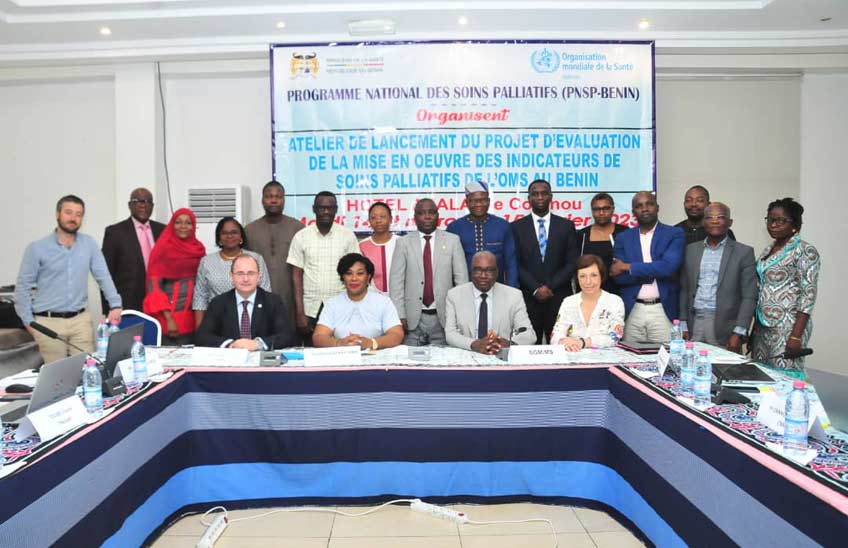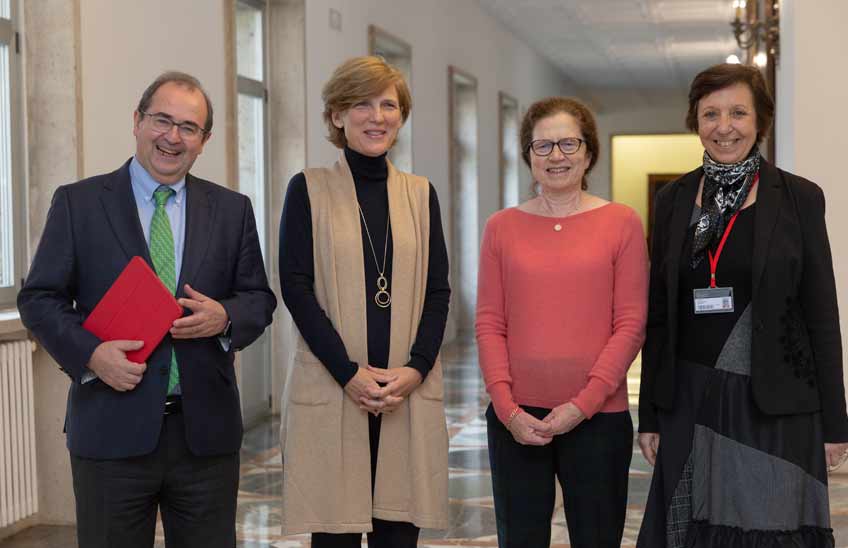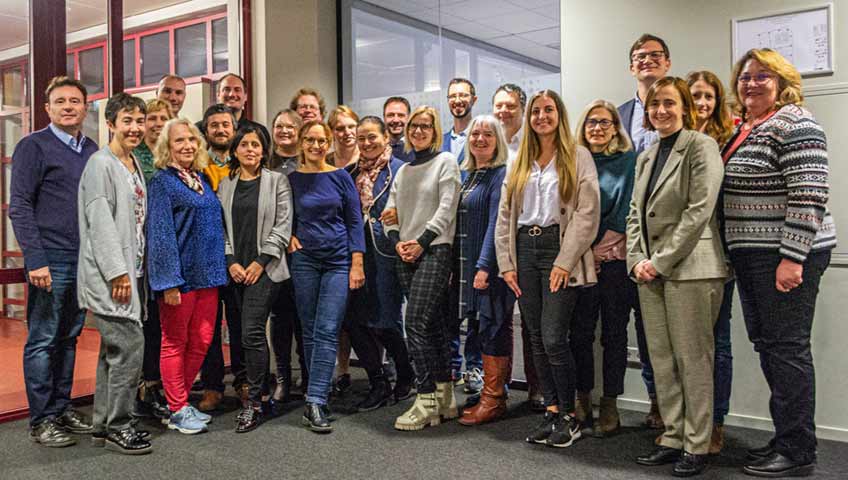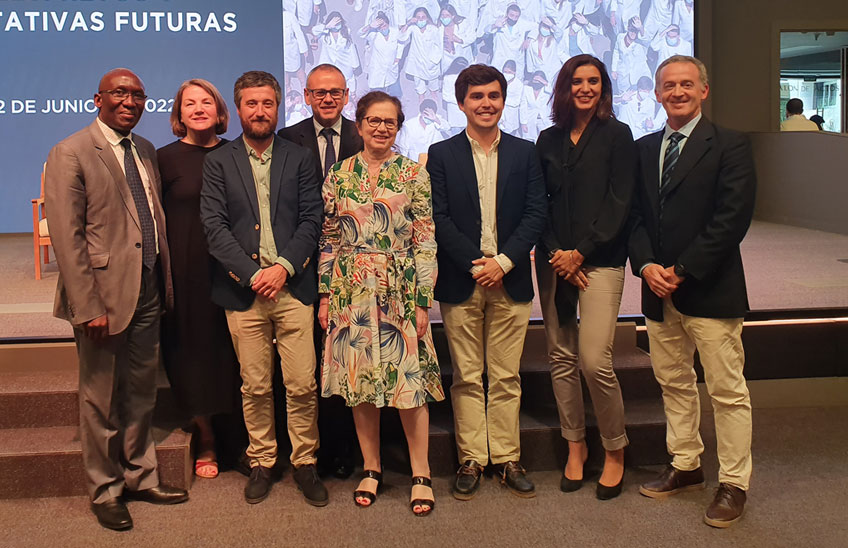ICS researchers coordinate a set of indicators for the WHO to evaluate and monitor development palliative care in the world.
The work, coordinated by the ATLANTES Global Palliative Care Observatory team, recalls that 56.8 million people need palliative care each year and that 2.5 million children die of illness-related suffering.
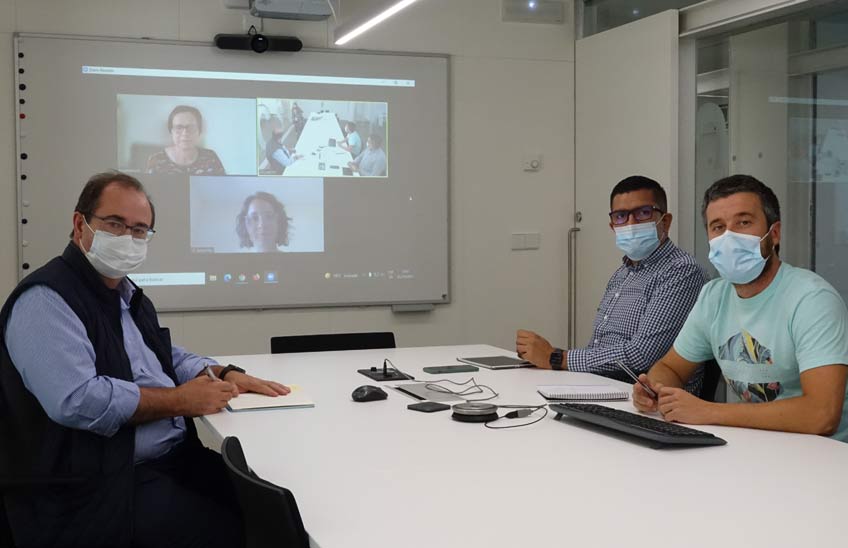
PhotoIsabelSolana/Members of the Global Palliative Care Observatory ATLANTES of the University of Navarra, at a meetingof workwith members of the WHO. On the left, Carlos Centeno Cortés; in the background, Miguel Sánchez Cárdenas; on the right, Eduardo Garralda Domezain.
08 | 10 | 2021
The Global Palliative Care Observatory ATLANTES of the University of Navarra has coordinated for the World Health Organization (WHO) a set of indicators to assess and monitor the development of palliative care in the world. It has been presented this week at the 17th World Palliative Care congress , in a joint symposium of the WHO and association European Palliative Care.
More than 50 experts and technicians from more than 20 countries and WHO headquarters collaborated on report over two years, under the supervision of Marie-Charlotte Bouësseau and Anna Ray from WHO's department Integrated Health Services. The aim of goal was to provide policy makers, legislators and social partners with a tool to identify areas for improvement in the national palliative care development .
Carlos Centeno, director of the group of research ATLANTES, which is integrated in the Institute for Culture and Society (ICS), explains the new conceptual framework embodied in the metaphor of "the house of palliative care", built with six elements or dimensions. According to him, the foundations present "the capacity of society and individuals to promote palliative care" and "that of governments to promote palliative care with appropriate health policies". The floor of the building "is the research, which generates the scientific evidence to practice advanced medicine".
The walls represent "skilled and trained health professionals and the availability of essential medicines to alleviate suffering," he says. And on top of those walls sits the roof, "the development of integrated palliative care services within national health systems to meet the needs of patients and their families".
Addressing the particular context of each country
The architecture of the house, he says, should reflect the particular context of each country: its health system, social and cultural specificities and available resources. In this way, he insists that "each nation must build this home with its available materials and its particular style".
The conceptual model with the six components of palliative care is deployed in health indicators, which allow monitoring and evaluation of palliative care activity of agreement with the resources and capacities of each region.
The team that developed the indicators recalls that the mission statement of palliative care is to alleviate suffering from advanced illness at all stages of life. An estimated 56.8 million people require palliative care each year and almost 2.5 million children die in need of palliative care, 98% of them in low- and middle-income countries.
Carlos Centeno notes that work is aligned with World Palliative Care Day 2021, which is celebrated under the theme 'Leaving no one behind: equity in access to care'. With these health indicators," he concludes, "WHO wants to promote the development of palliative care in all regions, as it considers it an ethical responsibility of health systems.
Fourteen indicators of palliative care development
|
INDICATOR |
|
|
Integrated palliative care services |
|
|
|
|
|
|
Health policies |
|
|
|
|
|
|
|
|
Use of essential medicines |
|
|
|
|
|
|
|
|
Education y internship |
|
|
|
|
|
|
Empowering people and communities |
|
|
|
|
|
|
Research |
|
|
|
|

